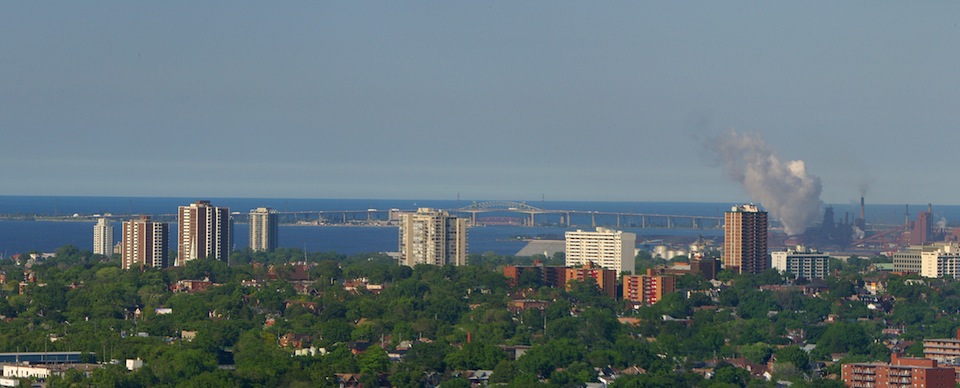As the first quarter of 2014 draws to a close the threat of global climate change has been largely absent from the public discourse.
As the first quarter of 2014 draws to a close the threat of global climate change has been largely absent from the public discourse. As Canadians struggled through a colder than average winter Australia, the UK, and California have been struggling with record heat, flooding, and drought (respectively). The global economic recovery and ongoing tensions over Ukraine, among other issues, have relegated climate change news to the proverbial sidelines. While groups like the American Academy for the Advancement of Sciences have raised the alarm in recent weeks, some environmentalists are becoming discouraged. The Guardian’s Nick Cohen penned a controversial article suggesting that climate change deniers have won given the perceived lack of political action. This is a fairly cynical – and incorrect – outlook; it may not be getting national media attention, but there is actually a great deal of climate change action happening at the local level.
Contrary to Canada’s other levels of government, municipalities are making encouraging strides in addressing climate change mitigation and adaptation. I’ve written before about municipal climate action (see these articles from November 2012 and April 2013) as municipalities come together to share best practices, information, and collaborate to generate solutions for moving forward.
Attendees will be congregating in Vancouver, BC from April 2 to 4, 2014 for the Liveable Cities Forum on building resilient communities, hosted by ICLEI Canada (an agency of the International Council for Local Environmental Initiatives). In mid-February the Federation of Canadian Municipalities (FCM) held the annual Sustainable Communities Conference and Trade Show in Charlottetown PEI, featuring workshops and sessions on municipal issues such as financing solutions for sustainability initiatives, greening and repurposing existing buildings, and local approaches to building resilience to climate change.
Most recently, in late February the City of Hamilton together with Clean Air Hamilton hosted their biennial 2014 Upwind-Downwind Conference focussed on the Built Environment and Clean Air. The Upwind-Downwind conference brought together municipal planners, government officials, industry representatives, academics, local citizens and NGOs to learn and formulate practical solutions.
Hamilton showcased its progress, including the creation of new energy and transportation sustainability initiatives, participation in the Partners for Climate Protection program, and launching a climate change action charter to help organizations, businesses and individuals take action. In 2013, Hamilton partnered with community groups and McMaster University’s Centre for Climate Change Research to create a climate change map of the city with both predicted impacts and community actions, becoming the first municipality in both Ontario and Canada to create such a map. While some of the focus was on what Hamilton had achieved and what lessons could be learned, the Conference also highlighted what other municipalities throughout Southern Ontario and North America have accomplished.
[Subscribe now to get our Sharing issue, including a feature story on the Sustainability CoLab, which is helping municipalities across the country take climate action.]
Upwind-Downwind participants delved into issues surrounding the built environment, transportation, and public health. Part of the conversation examined the need for complete streets in our cities, a concept that has been under fire as part of the so-called “war on the car.” Just days after the conference, senators in the US introduced the Safe Streets Act in order to incorporate complete streets to federal road funding, a policy which could viably be transposed to Canada.
Guest speaker Mike Lydon broke down the notion of ‘tactical urbanism’ where citizens undertake quick, temporary projects within cities to make them more enjoyable and liveable, such as urban gardening or public art. Citizens are becoming more engaged in their communities and tactical urbanism is on the rise. During a 2013 visit to Hamilton, Lydon engaged interested activists, even conducting some ‘intersection repair’ that resulted in discussions with the city and a new pilot project with city officials to enhance street corners at intersections for pedestrian traffic.
Air quality management and public health was another key focus of the day. The recent crises in China and France illustrate the detrimental impacts of air pollution, with Beijing’s current state being compared to nuclear winter by some commentators. Pollution from nonpoint sources such as cars and trucks are a big part of the problem. In January, headlines were made when Toronto researchers measured concentrations of pollutants exceeding air quality standards in neighbourhoods adjacent to heavily-used highways, increasing the risk of premature death.
Public transit corridors are also a focal point, a prime example being the Georgetown South rail corridor expansion in Toronto’s Weston neighbourhood which led to citizen activism over public health concerns. Government officials will need to utilize new modelling techniques to track pollution and take steps to reduce the impacts, using vehicle emissions standards, for example.
The final session of the day dealt exclusively with climate change adaptation and mitigation, with municipal planners speaking on behalf of Ajax, Brampton, Durham Region, Vaughan and Richmond Hill. Evidentially much of the focus has shifted to adaptation in the wake of events such as the 2013 Toronto floods and ice storm and the Calgary flood, which set records as the costliest natural disaster in Canadian history.
Climate change is being included in municipal official plans and strategic plans, and is now an important factor in the development approvals process. For example, in the Town of Ajax developers must demonstrate how their proposal is designed to be less vulnerable to anticipated climate change impacts and must contain design standards such as stormwater management, enhancement of the tree canopy to combat the urban heat island effect and conformance to natural heritage systems.
Municipal collaboration was a key message of the day from municipal officials in attendance. In Brampton, Vaughan and Richmond Hill planners have an opportunity to measure the sustainability performance of new development, which will be fundamental as these areas undergo rapid development and urbanization. As a result of developer requests for clear, consistent environmental guidelines across jurisdictions, municipal officials worked together to develop a sustainability checklist. Indicators and metrics were developed through a series of consultations. Projects must now meet and exceed a minimum score in order to gain approval. Developer feedback has been positive in regard to the flexible “choose your own adventure” approach incorporated into the sustainability metrics, allowing proponents to select those initiatives most applicable or relevant to the type of project and site location. The initiative is currently being implemented in Richmond Hill on a trial basis.
Similarly, the speaker from Durham Region presented their positive experiences from holding a series of “charettes” (defined as an intense period of design or planning) with members of the public and stakeholders. After building a one-square-kilometre map of anticipated climate change impacts in the region (similar to Hamilton’s map) and presenting it for review, design charette attendees and experts crafted upwards of 20 programs and initiatives to take to council for endorsement.
With municipal elections scheduled for October, along with imminent provincial and federal contests, it is vital for concerned citizens to become informed and raise these issues with their electoral candidates. Events like the Upwind-Downwind Conference show that practical, effective climate change and air quality solutions are possible. Instead of giving in to climate change apathy, community collaboration, tactical urbanism and other bottom-up approaches will lead to a more sustainable future.
Want to learn more about how Canadian municipalities are tackling climate change? Subscribe now and receive our Sharing issue for a story on the freshly-launched Sustainability CoLab.
Dan is an environmental professional currently living in Toronto. Dan has previously published in Municipal World and Environmental Science and Engineering. He specializes in energy, transportation, and climate change policy, corporate sustainability, and environmental planning and assessments. He recently completed a Masters of Environmental Applied Science and Management at Ryerson University and has a Bachelors' degree in Environment and Business from the University of Waterloo.












